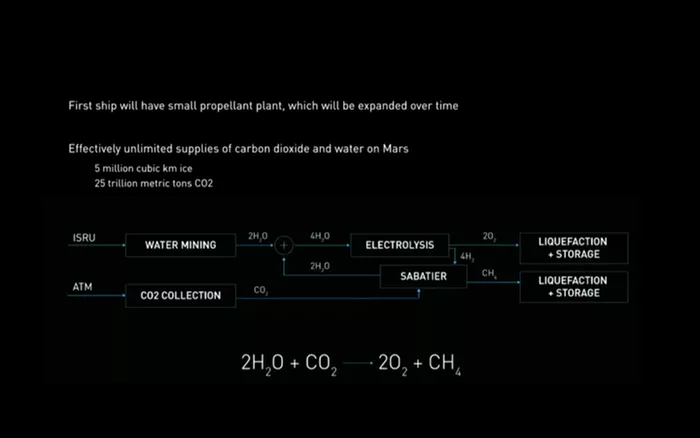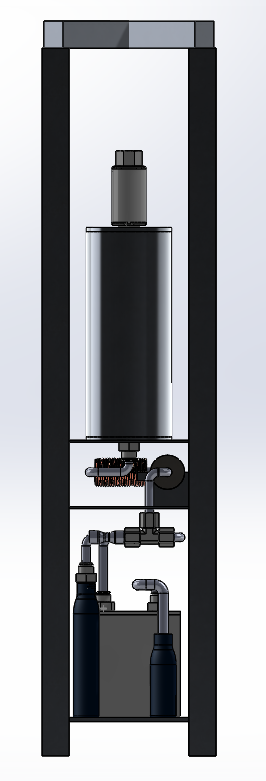Intercollegiate Rocket Engineering Competition 2018-2019
Payload development: Mars Methane Synthesis Plant
Introduction
I designed a methane production plant that is able to create and store methane. The plant can be launched as the payload on a 12 foot long, 6 inch diameter rocket. It would then descend on its own and land to begin producing methane to be used as rocket propellant. This plant consists of an electrolysis mechanism, a Sabatier reactor, a resistive wire heater, a storage container, and a copper coil condenser. A simplified diagram of the plant can be seen below.

The motivation for this system is to help future astronauts who will be travelling at least six months to get to Mars. We can eliminate the weight of extra rocket fuel for a return trip, because the methane produced could be used as a substitute to get rockets back to Earth. With the atmosphere on Mars consisting of 96% carbon dioxide on the Martian surface, we can more readily make methane over other alternative fuels.
Although Mars has ice under the surface, we will include water, and sodium hydroxide as the electrolyte for the electrolysis reaction to simplify the process. Also, a canister of carbon dioxide will be brought to simulate the Martian air. Despite our plant process simplifying the methanation process, a more complex system would be necessary on Mars, as shown below in a slide presented by SpaceX.

Below is a picture of the entire methane synthesis plant. For a detailed explanation of the system, the full report can be viewed here

